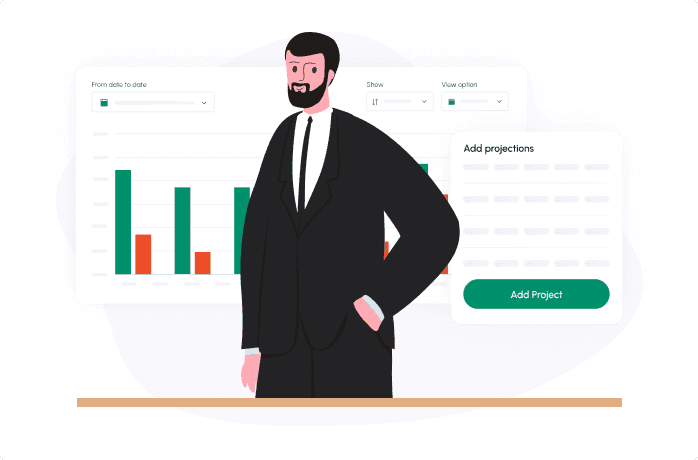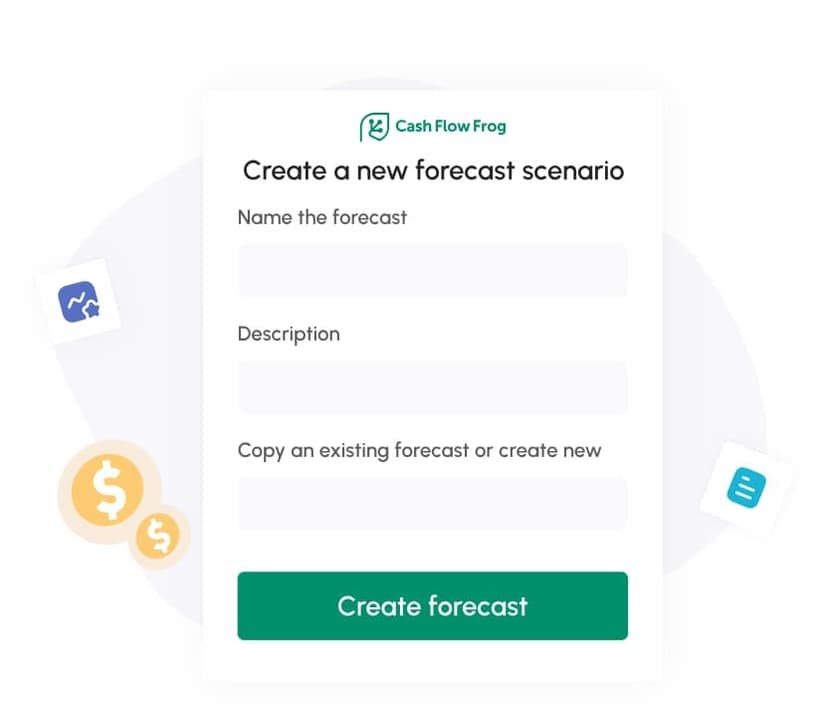Cash Break Even Point Formula to Achieve Profitability

Formula for Calculating the Cash Break Even-Point
What’s standing between your business and financial collapse? Slow months? Operational inefficiencies? Debts?
In most cases, it’s understanding your cash break-even point.
Below this threshold, your business could face hard decisions — assets in liquidation, layoffs, or seeking emergency loans, resulting in extreme losses.
But what is the cash break-even point? It’s where your revenue covers your costs — nothing more.
By performing a cash break-even analysis, you can calculate the exact revenue levels your business needs to meet fixed costs, making it an integral part of understanding your financial health.
Want to keep your business afloat? Let’s learn more about the cash break-even formula together.
How Do Break Even Analysis and Cash Flow Forecasting Work?
To understand how BEP analysis and cash flow forecasting work together, we must ask, "What does break-even mean?"
Simply, it's when your profits match your costs — when your business earns just enough revenue to cover expenses.
A cash flow break-even analysis helps you understand your business's financial health by telling you:
- How much sales revenue do you need to cover your expenses
- When money from these sales is collected
This calculation is a vital tool to make cash flow projections. Using these projections, you can predict slow periods and plan to avoid negative cash flows (i.e., running out of money).
In short, when you incorporate break-even points into your cash flow forecasts, you can create data-driven revenue and sales goals to cover your core operating costs.
Cash Flow Break Even Point Formula
Multiple factors are involved in the cash break-even point formula. In fact, there's no typical mathematical formula to follow to determine a business's cash break-even ratio or perform a cash analysis.
What is cash analysis?
It's a sum of:
- Total fixed costs (rent, leasing, loans, wages) plus
- Total variable costs (new equipment purchases, supplies, materials) minus
- Cash in hand, plus
- Cash in bank accounts, plus
- Accounts receivable that are due
Once you have this sum, you'll need to subtract all of the cash flow from your costs. The break-even point is right in the middle. You didn't make or lose any money if you hit the break-even point. Instead, you have enough money to pay the bills and keep operations going.
To make it easier, here’s how to calculate the cash break-even point:
Break-Even Point (BEP) = Total Fixed Costs + Total Variable Costs - (Cash in Hand + Cash in Bank Accounts + Accounts Receivable)
You can also expand on the break-even cash flow formula by including past data.
For example, you may be able to forecast next month's break-even point by looking through the past 3 years of data for the month to understand variable costs and cash coming into the business.
Using a cash break-even calculator can help you make these calculations more quickly and with a lower risk of errors.
However, practicing computing using the cash BEP formula can make you understand it more clearly. Here are some examples:
Example 1: Small Retail Business
Let’s say you have a small store with the following numbers:
- Fixed Costs - $5,000 in rent and salaries
- Variable Costs - $3,000 in inventory and utilities
- Cash in Hand - $2,000
- Cash in Bank - $1,000
- Accounts Receivable - $2,000
Using the cash flow breakeven formula, we can calculate the BEP:
BEP = 5,000 + 3,000 - (2,000 + 1,000 + 2,000) = 8,000 - 5,000
BEP = $3,000
Example 2: Consulting Firm
- Fixed Costs - $10,000 in office lease and salaries
- Variable Costs - $4,000 in marketing and travel expenses
- Cash in Hand - $1,500
- Cash in Bank - $2,000
- Accounts Receivable - $5,000
BEP = 10,000 + 4,000 - (1,500 + 2,000 + 5,000) = 14,000 - 8,500
BEP = $5,500
For a more detailed explanation, check out this break-even analysis video.
Why Track Cash Flow Break-Even Point?
Your cash flow BEP is your business's safety net — pinpointing when your revenue covers your expenses. This point helps you avoid costly mistakes and control your finances.
Here’s why it’s an essential part of smart financial management.
1. Avoid financial troubles
Your BEP helps you spot risks early. If your costs exceed profits, there might be issues with your operations and planning.
Monitoring aspects like sales volume helps identify gaps in your business and take action.
2. Set clear revenue goals
Your BEP is your target — how much you need to sell to stay profitable. Considering your contribution margin in your planning makes it easier to see how each sale brings you closer to your BEP and makes you a profit.
3. Make smarter budgeting decisions
Pairing BEP analysis with forecasting helps your business:
- Predict how much cash you’ll have over a set period.
- Track client payments.
- Create budgets.
- Understand how much you’re spending on administration, marketing, and other expenses.
This data ensures your budgets are more accurate and that spending doesn't negatively affect your financial health.
4. Plan for the future
Your BEP is your solution for financial forecasting — helping you prepare for slow seasons, plan growth, and ensure your business always stays ahead.
Strategies to Reach the Cash Flow Break-Even Point
Reaching the cash flow break-even point is achievable, even for small businesses. With the right controls, spending habits, and revenue-boosting strategies, you can hit your BEP and set your business up for success quickly.
Here are some strategies you can do to reach your BEP.
Effective Cost Control Measures
Look at your total cash outflows and find ways to save without cutting corners. Some ways include:
- Negotiate with suppliers to make better deals.
- Automate repetitive tasks to reduce costs.
- Cancel subscriptions your business doesn’t use.
Remember that wise spending is one of the best practices of cash flow management — keeping costs low without sacrificing the quality of goods or services.
Revenue Enhancement Strategies
Boosting your profits is the most straightforward way to reach your BEP — more money and faster progress.
You can increase your total cash inflows by doing the following:
- Offer complementary goods or services.
- Adjust prices to improve your contribution margin.
- Upsell to existing customers.
With extra sales, you can get closer to answering what is cash BEP and surpassing it.
Resource Optimization
Using your resources more effectively significantly impacts your cash flow. So, make the most of what you already have by:
- Use tools like cash flow forecasts for smarter planning.
- Reallocate underused staff or assets to higher-value areas.
- Review your spending regularly to ensure every dollar spent drives value.
Customer Retention
You might not realize it, but your loyal customers are your best assets. Keep customers loyal to your business by doing the following.
- Offer rewards or loyalty programs.
- Listen to their feedback and adjust your products or services to improve their experience.
These strategies can help you reach your BEP faster. Remember, work smart, not hard.
Conclusion: Cash Flow Break-Even Point for Financial Stability and Success
Understanding and tracking your cash flow break-even point is crucial to achieving financial stability and growth for your business. With the right strategies, you can reach (and exceed) your BEP, allowing you to plan your future more effectively.
Remember that the cash flow break-even point and forecasting are your partners in achieving sustainable profitability, transforming your financial leadership from reactive to proactive. In short, the cash flow BEP formula allows you to take your business to new heights.

Cash Flow Forecasting Template
Read more

Your Guide To Financial Metrics And KPIs
Read more

10 Cash Management Trends for 2026
Read more

10 Best Cash Flow Business Ideas: Build Income That Counts
Read more

Direct vs Indirect Cash Flow - Which Method Fits Your Business Better?
Read more

Best Practices for Cash Flow Forecasting That Actually Work
Read more
FAQ
Trusted by thousands of business owners
Start Free Trial Now